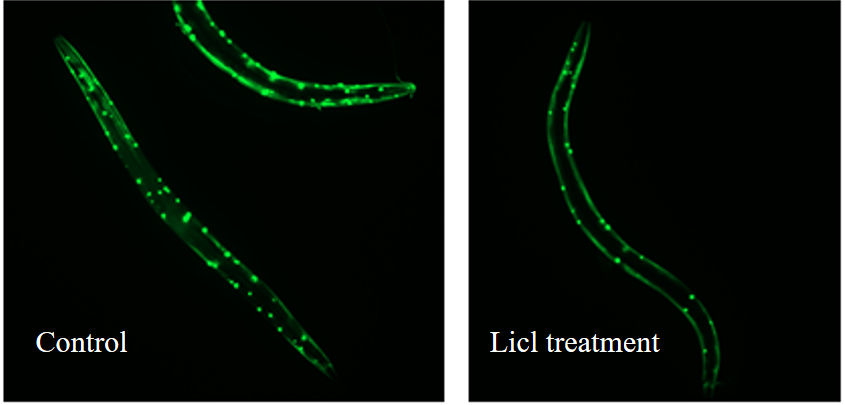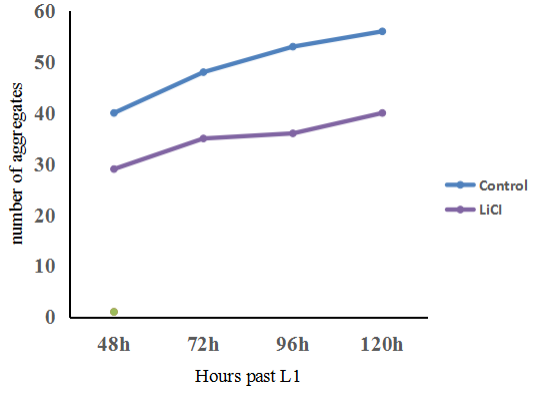Huntington’s Disease (HD) is an autosomal dominant neurodegenerative disorder characterized by progressive movement defects, dementia, mood disorders and even neuronal death. The HD is caused by mutations in the huntingtin protein (Htt)gene, leading to variable lengths of the N-terminal polyglutamine chain (polyQ). Generally, when ploy-Q lengths exceed 36, Htt becomes unstable, resulting in protein misfolding, aggregate formation, thereby triggering neurodegeneration and disruption of energy metabolism in muscle cells.
C. elegans for Huntington 's disease research
C. elegans has been successfully used to establish HD models by inserting single or multiple copies of the Htt gene or Htt gene fused with a fluorescent tag, such as Htt-Q150 and Q40-GFP. These models exhibit disease-relevant "phenotypes" including neuronal death, deposition of polyQ proteins, and decreased motor ability.
Our Services
Observing polyQ fusion protein fluorescence (green) of nematodes under a fluorescence microscope, and judging the deposition of polyQ aggregates by the fluorescence intensity, thereby identifying the severity of HD.
ØpolyQ Proteins

Figure 1 Poly-Q protein deposition in HD model nematodes after lithium chloride treatment

Figure 2 The amount of poly-Q protein deposited in HD model nematodes after lithium chloride treatment
Related Services
Additional services, including customized HD model development, are available upon request. Contact us to discuss your specific research needs.


